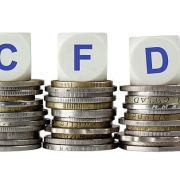When it comes to optimizing your website, you may feel overwhelmed by the wealth of information available at your fingertips. Fear not – dear reader, as we’ve done the leg work for you. In this article, we’ll dive deep into the top five on-page SEO factors that, when executed correctly, will boost your site’s performance and visibility in the vast ocean of Google search results.
1. High-Quality Content
Content is, and always will be, king. To excel in search engine optimization in Atlanta, it’s crucial to create engaging, varied, and educational content about your niche. Be it blog posts, videos, or images, the more valuable the content, the better your chance of gaining exposure, improving bounce rates, and converting visitors to customers.
2. Title Tags and Meta Descriptions
Title tags and meta descriptions are critical components of on-page SEO. The title tag lets search engines and users know what a specific page on your website is about, while the meta description provides a brief summary of the page’s content.
Ensure that your title tags are unique, keyword-rich, and not overly long (not exceeding 60 characters). Meanwhile, meta descriptions should be compelling, relevant, and informative, ideally staying within the limit of 160 characters.
3. Header Tags
Header tags (H1, H2, H3, etc.) are essential for breaking up your content and making it more readable and easier to navigate. Moreover, search engines recognize these as indicators of the page’s content hierarchy, boosting your site’s SEO.
When crafting header tags, avoid using your primary keyword in every single tag. Instead, incorporate secondary keywords or variations to keep the content natural.
4. Optimal Keyword Usage
Keyword usage is the bread and butter of on-page SEO. Despite the caution against excessive use of keywords in the introduction and headers, strategically placing them throughout the content is still vital. So, be sure to include your primary keyword within the first 100 words of your content, and aim for a balanced distribution without letting your content’s quality suffer.
5. Image Optimization
Visuals can greatly improve user engagement on your website. However, image optimization shouldn’t be overlooked when it comes to on-page SEO. When naming and uploading images, incorporate relevant keywords into the file names and alternative text (alt-text). Compress your images to reduce page loading time and ensure that they are appropriately sized for optimum performance.
Also, don’t forget to include descriptive captions, which make for another opportunity to seamlessly include relevant keywords.
Conclusion
These five on-page SEO factors are not the only ones that affect your website’s performance, but they are undoubtedly among the most critical. By understanding important SEO ranking factors, prioritizing high-quality content creation, optimizing title tags and meta descriptions, using header tags effectively, strategically employing keywords, and optimizing images, you’re well on your way to boosting your site’s visibility and ranking in search engine results.







Comments